What do you Need to Start Gardening: Things you need to start a Garden
Learn everything you need to kick-start your gardening adventure and cultivate a thriving garden!
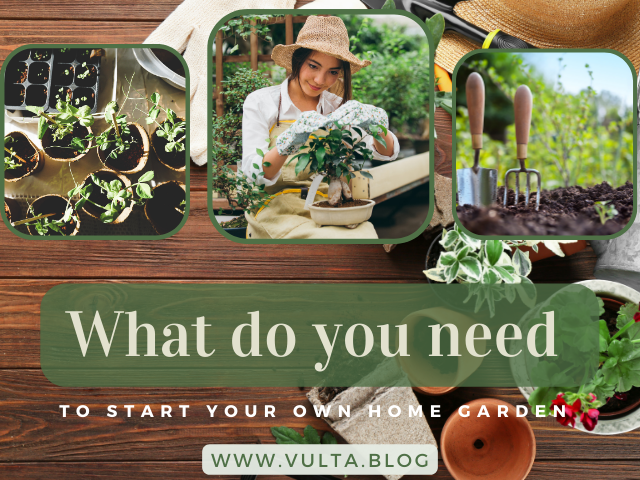
What do you need to start a Garden?
Gardening Tools
For Digging
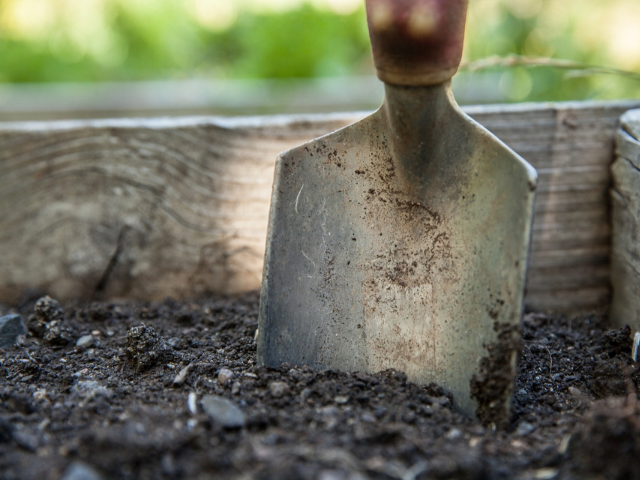
Equipment for Digging:
- Shovel (general digging): Shovels are versatile tools used for various digging tasks, such as creating planting holes or moving soil.
- Garden Spade (edging, digging trenches): Garden spades, with their flat, squared-off blades, are ideal for precise digging tasks like edging and creating trenches.
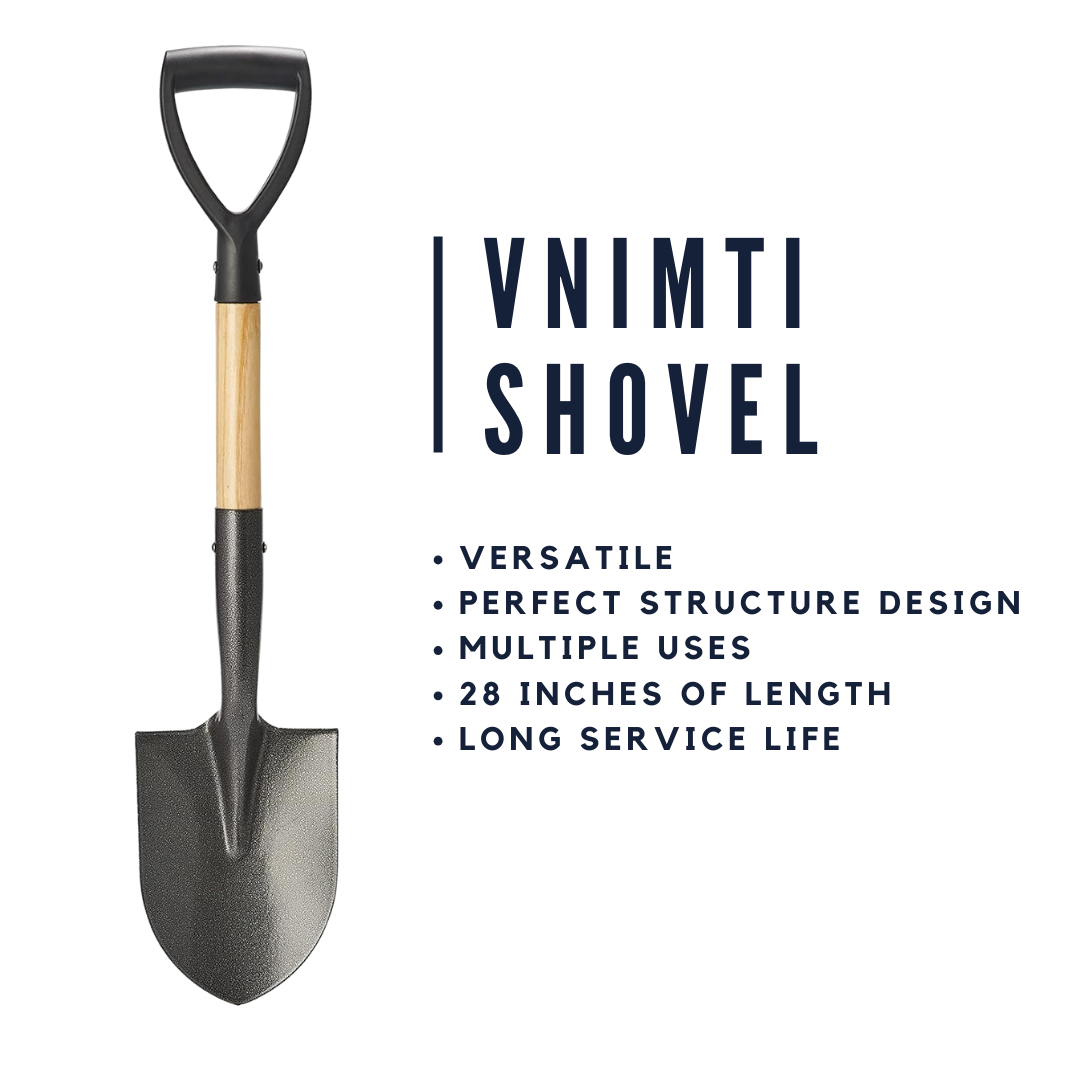
VNIMTI Shovel
for Digging, Small Round Shovel with an Overall Length of 28 Inches, Kids Beach Shovel with D-Handel, Mini Garden Shovel, Car Snow Shovel
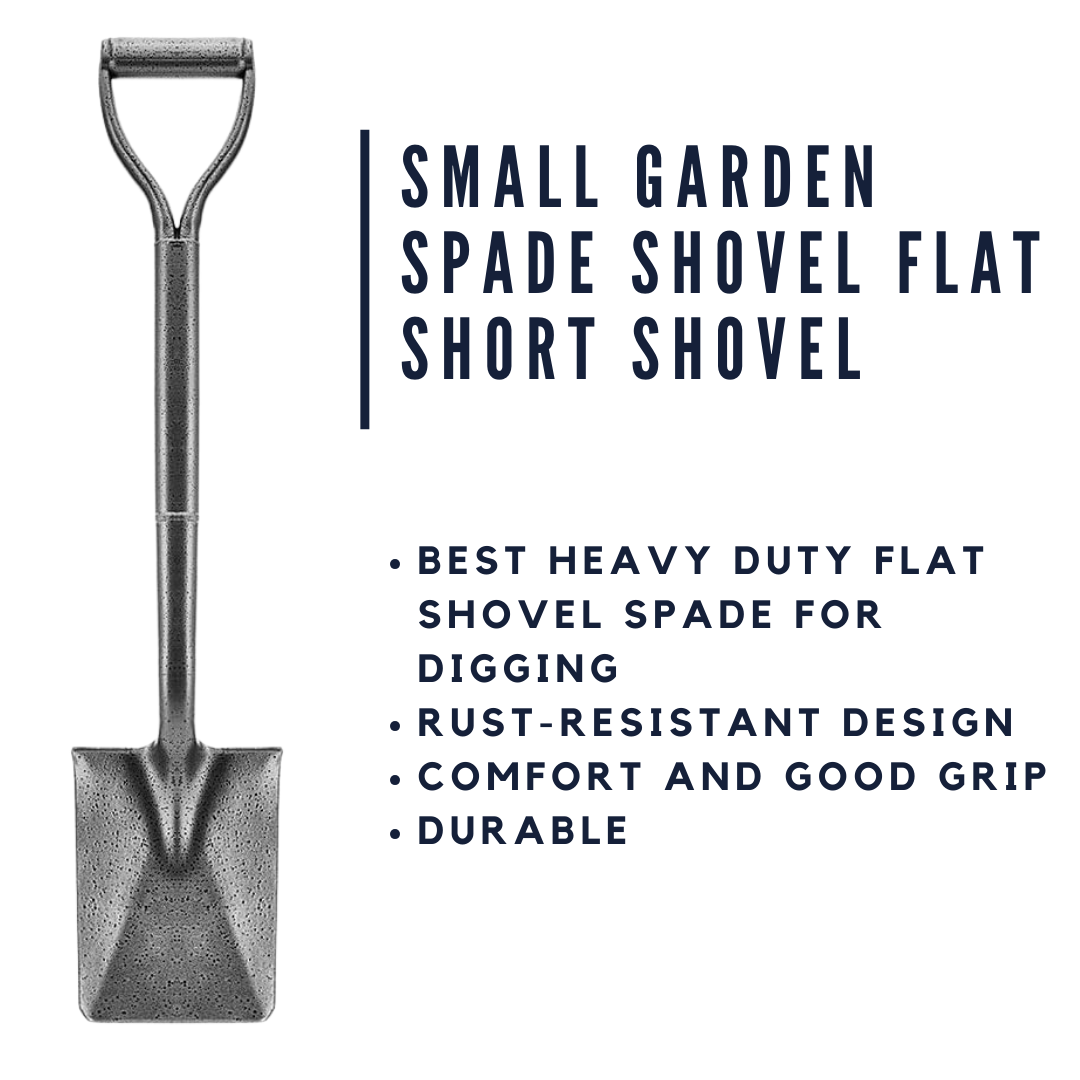
Small Garden Spade Shovel Flat Short Shovel
for Digging Gardening Spade Shovel with D Handle, Metal Shovel Square Point Shovel Steel Shovel Spade Shovels 30 Inch Mini Hand Shovels Digging Heavy Duty
For Tilling
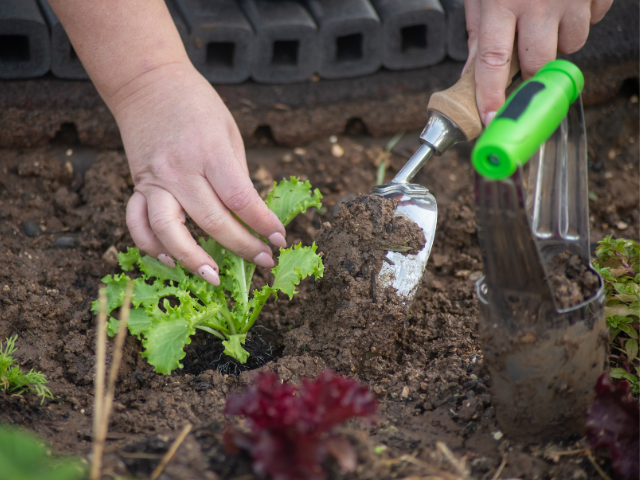
Equipment for Tilling:
- Garden Trowel (small-scale tilling): While primarily used for digging small holes, a garden trowel can also be used for light tilling in confined spaces.
- Cultivator (breaking up and aerating soil): Cultivators, with their multiple prongs, are designed for breaking up and aerating soil in larger areas.
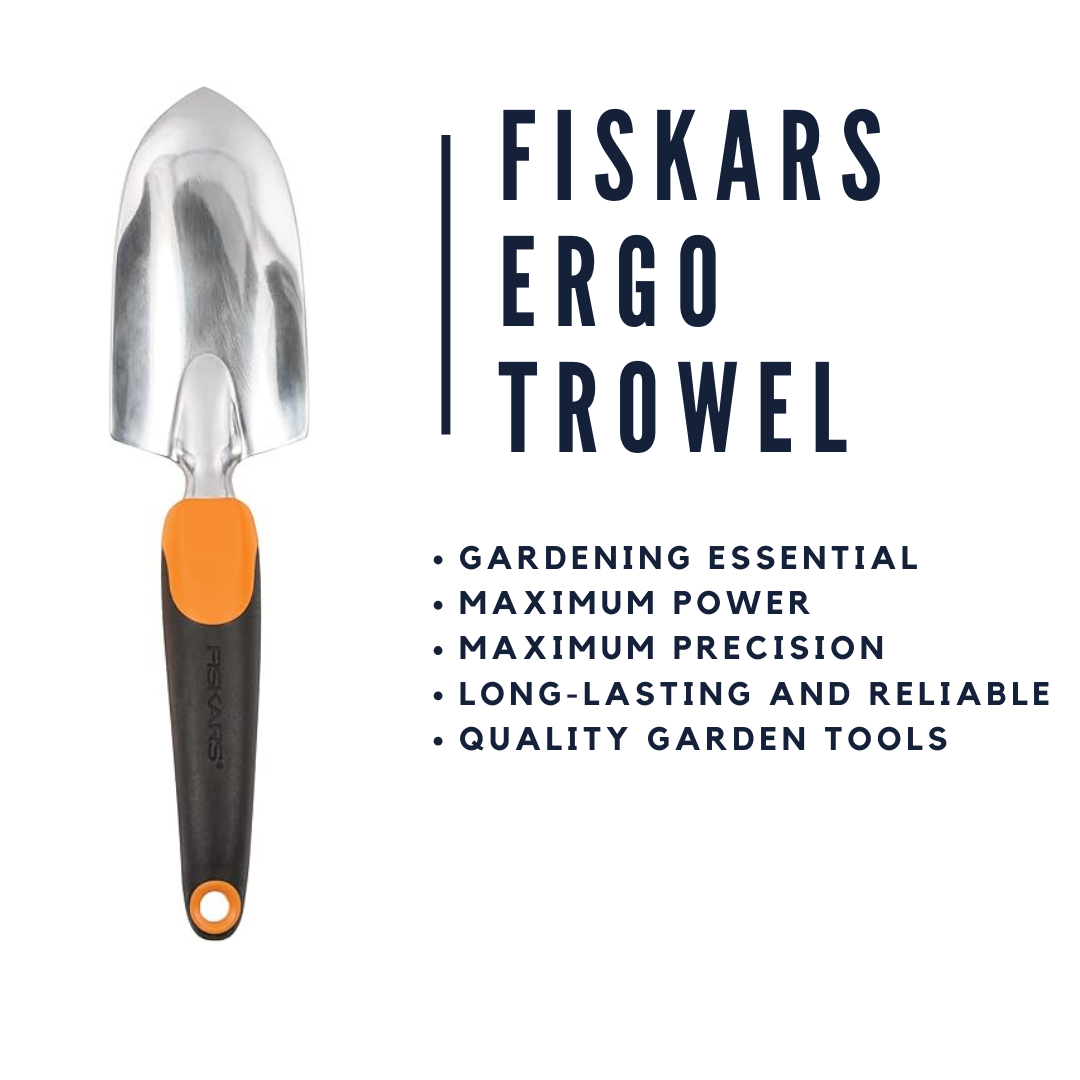
Fiskars Ergo Trowel
Heavy Duty Gardening Hand Tool with Hang Hole - Lawn and Yard Tools - Black/Orange
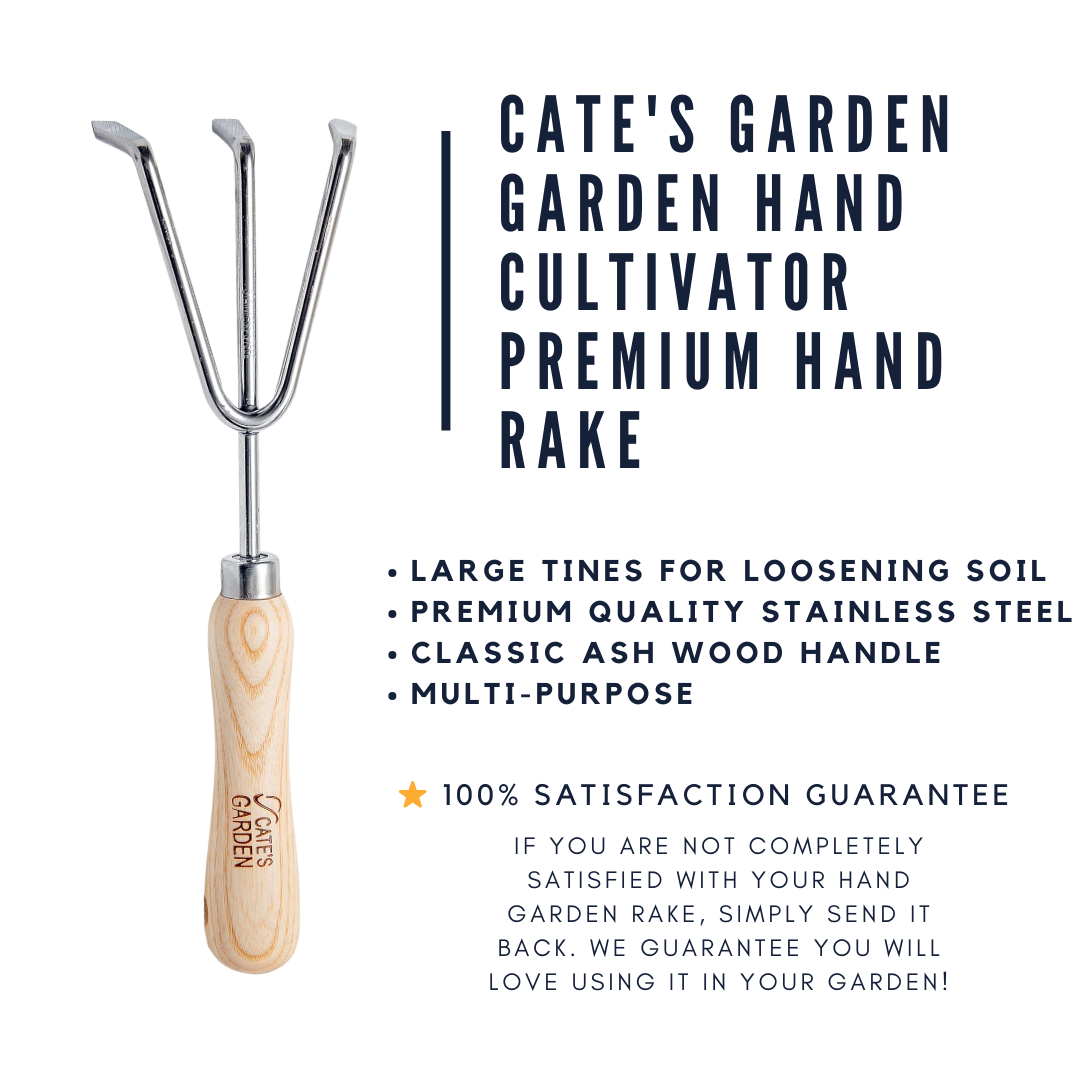
Cate's Garden Garden Hand Cultivator Premium Hand Rake
for Tilling Soil - Heavy Duty Stainless Steel, Smooth Natural Ash Wood Handle and Leather Strap
For Watering
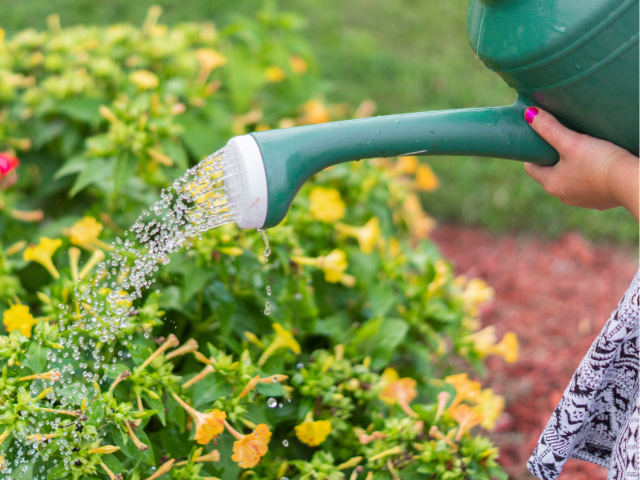
Equipment for Watering:
- Watering Can (gentle watering): Watering cans with spouts are useful for gently watering plants, especially delicate seedlings.
- Hose with a Nozzle (versatile watering): A hose with an adjustable nozzle provides flexibility in watering intensity for larger areas.
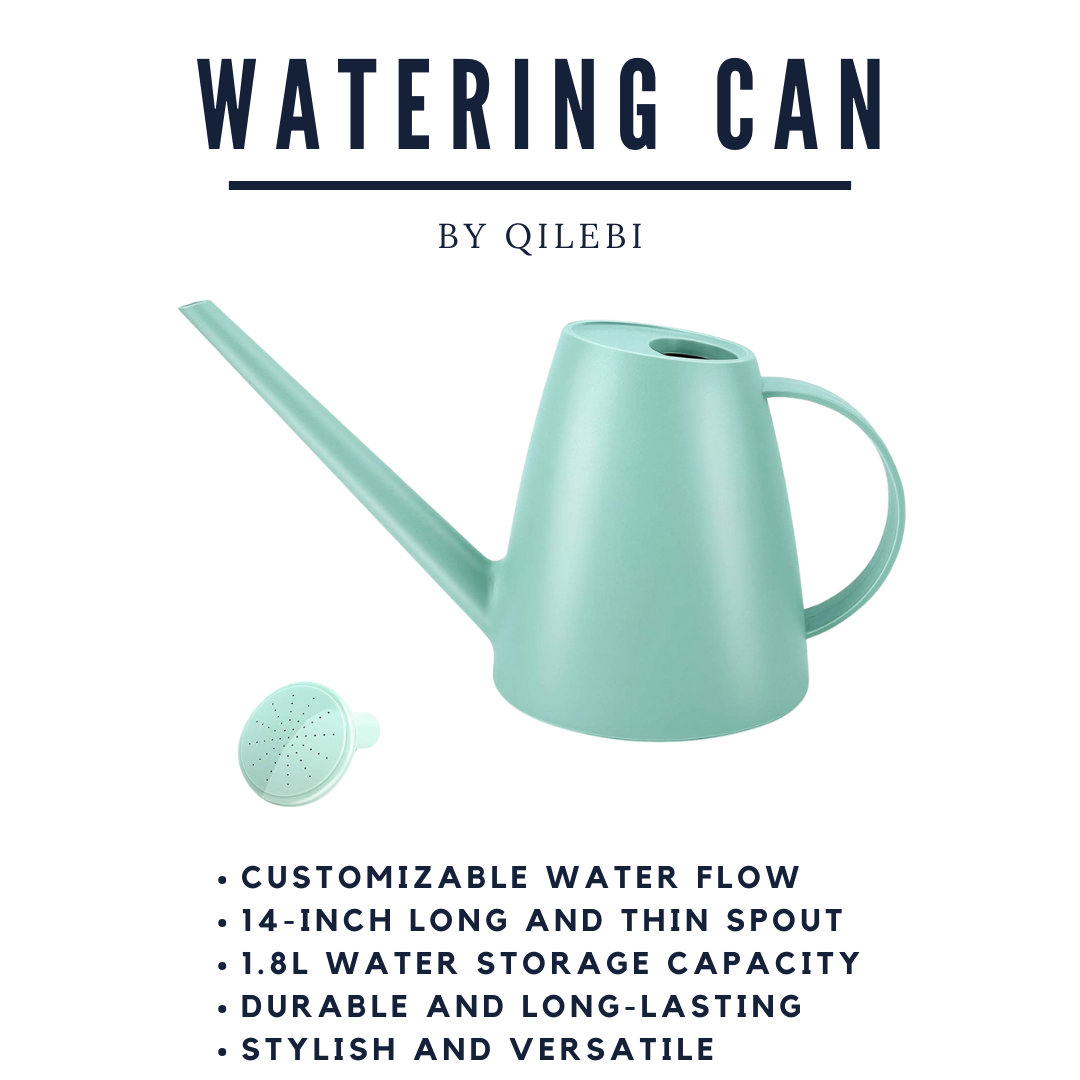
Qilebi Watering Can
for Indoor Plants, Small Watering Cans for House Plant Garden Flower, Long Spout Water Can for Outdoor Watering Plants 1.8L 1/2 Gallon
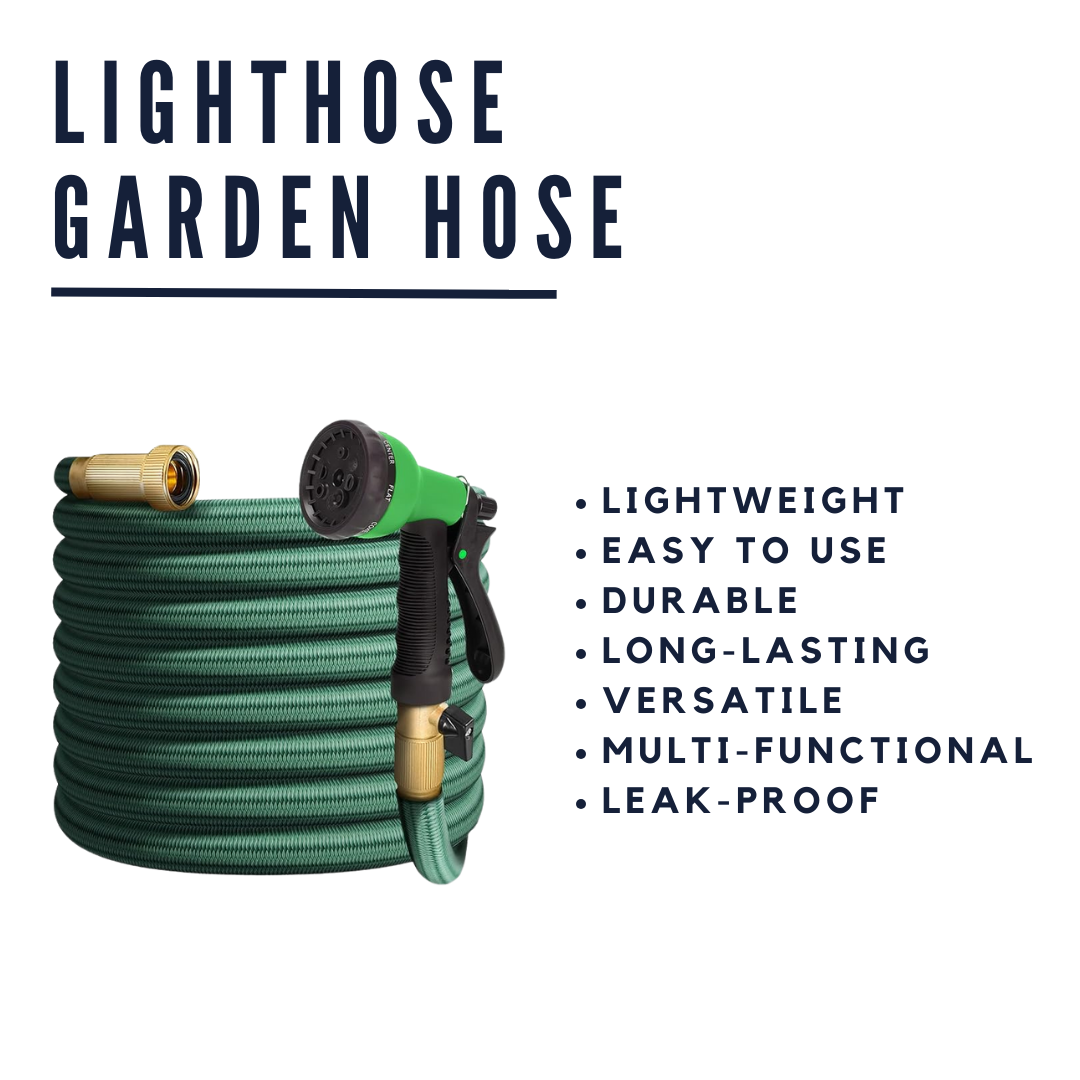
LightHose Garden Hose
NON-EXPANDABLE Garden Hose, Super Light Weight Hose, No Burst, 3/4 inch Solid Brass Connectors, 25 Ft, Black
For Uprooting/Weeding
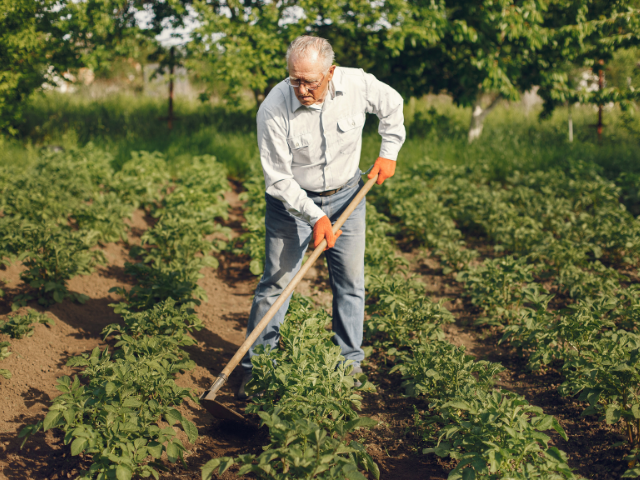
Equipment for Uprooting:
- Hand Weeder (prying up weeds): Hand weeders, with forked ends, are perfect for prying up weeds from the roots.
- Hoe (cutting weeds at the soil surface): Hoes, like Dutch hoes or stirrup hoes, are excellent for cutting weeds at ground level.
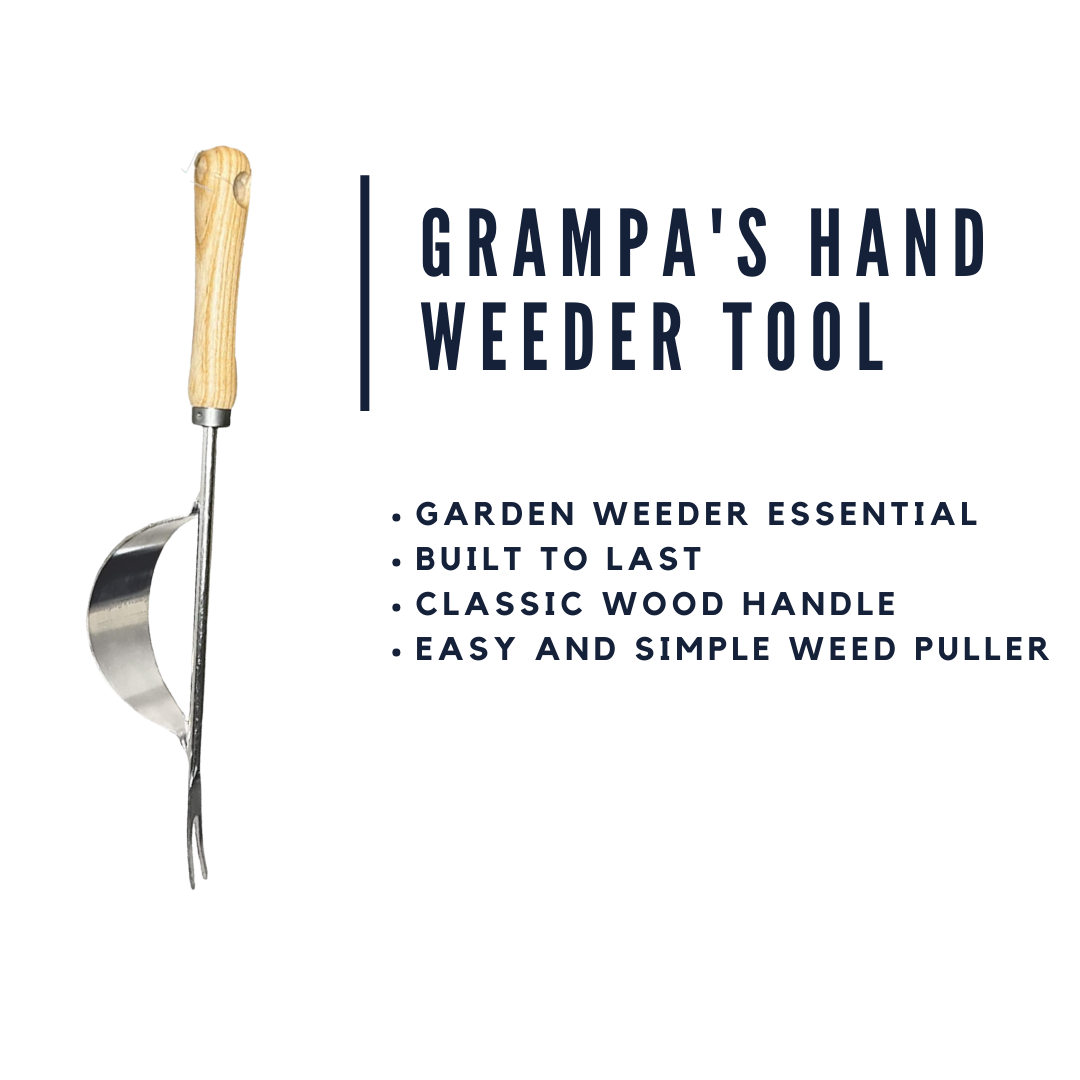
Grampa's Hand Weeder Tool
The Perfect Lightweight Easy to Use Weed Puller Tool for Garden - Durable Unique Lever Design with V-Shaped Forks Allows for Easy Removal of Weeds & Their Roots.
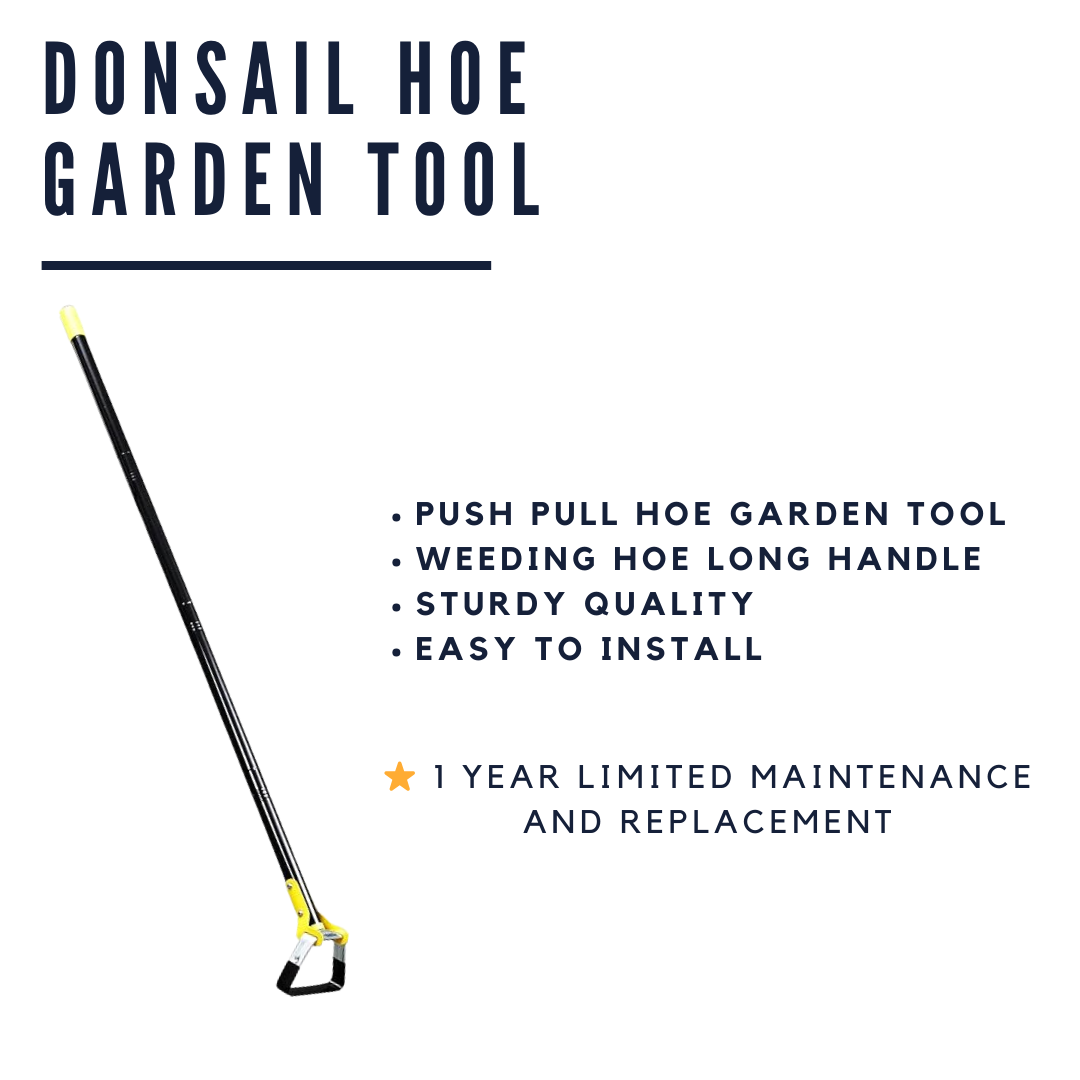
DonSail Hoe Garden Tool
Scuffle Garden Hula Hoes for Weeding Gardening Long Handle Heavy Duty - Adjustable Weeding Loop Stirrup Hoe 30-61 Inch Black
For Measuring and Marking
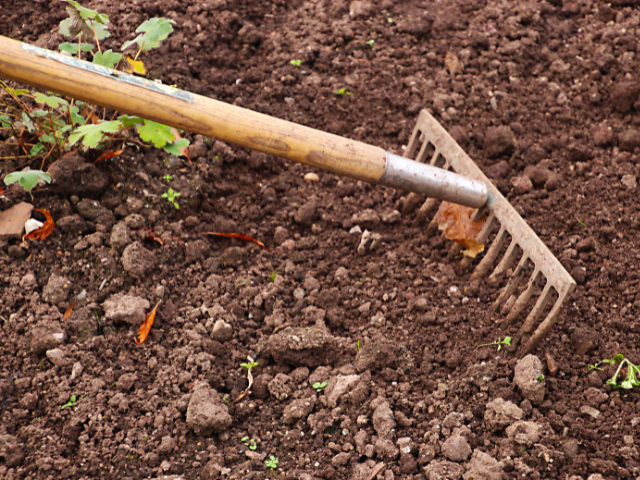
Equipment for Measuring and Marking:
- Garden Rake (leveling soil & spreading mulch): Garden rakes can be used for leveling soil, spreading mulch, and marking rows for planting.
- Tape Measure: Tape measures are handy for accurately measuring and spacing plants, ensuring proper distances between rows.
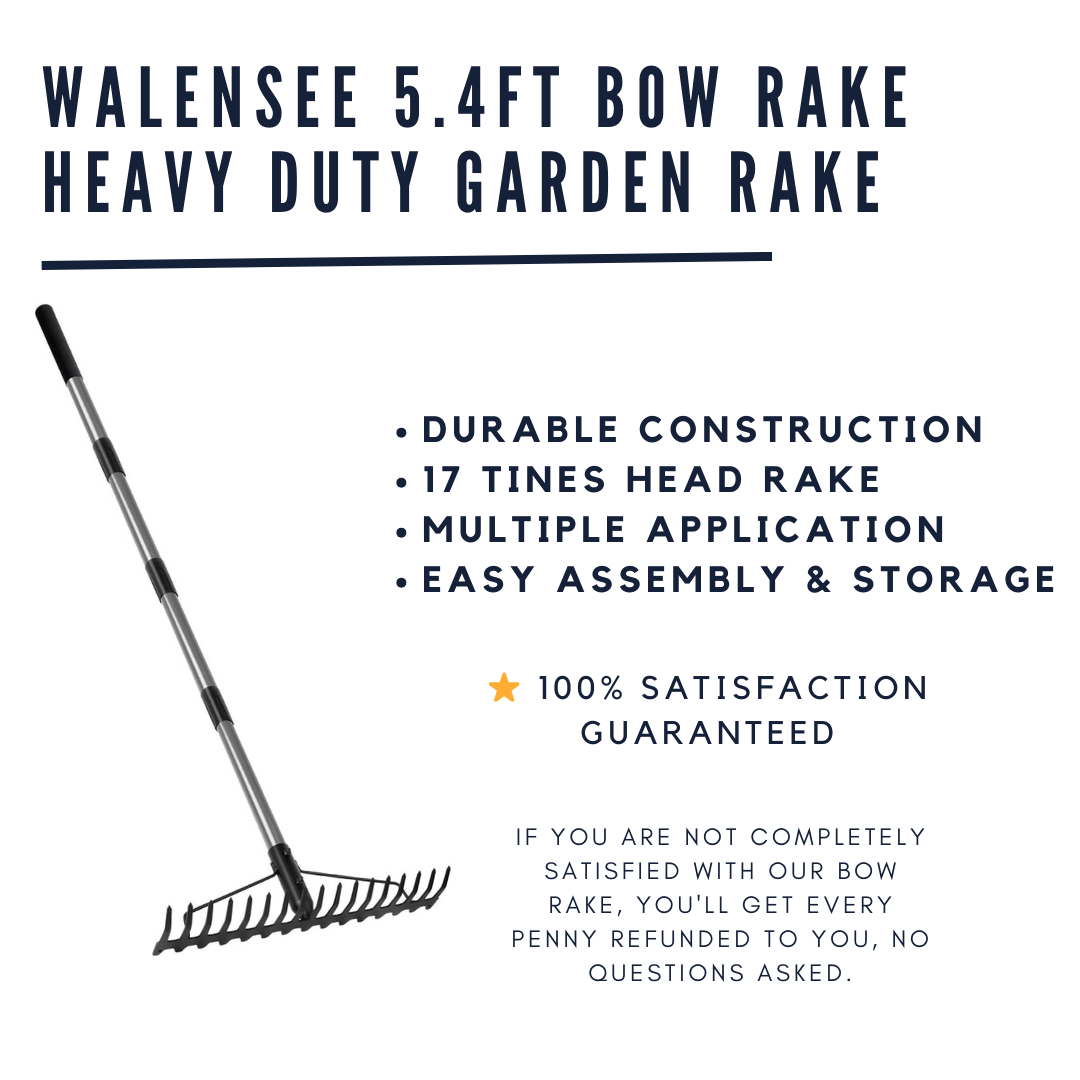
Walensee 5.4FT Bow Rake Heavy Duty Garden Rake
with Stainless Steel Handle, 17 Steel Tines Metal Head Rake Tool for Loosening Soil Gathering Leaf Leveling Lawn Farming Land Management Yarn Thatch Rake
For Pruning
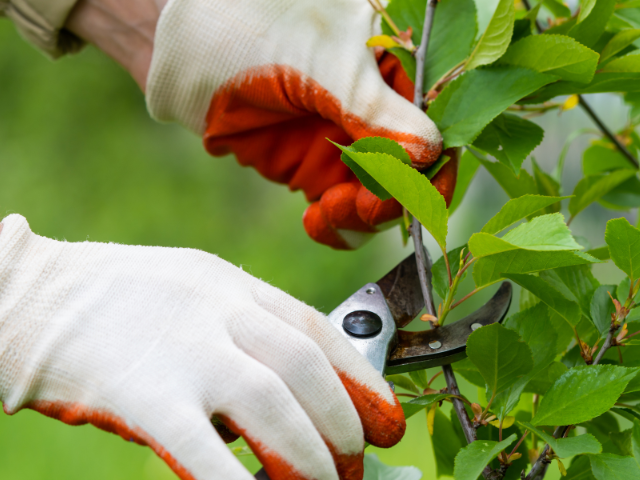
What is pruning?
Pruning is the act of removing parts of a plant that are dead, damaged, or infected in order to promote the overall health and appearance of the plant.
Equipment for Pruning:
- Pruning Shears / Hand Pruners (cutting small branches): Pruning shears are essential for cutting small branches and stems, maintaining the health and shape of plants.
- Loppers (cutting thicker branches and shrubs): Loppers, with longer handles, are suitable for cutting thicker branches and shaping shrubs.
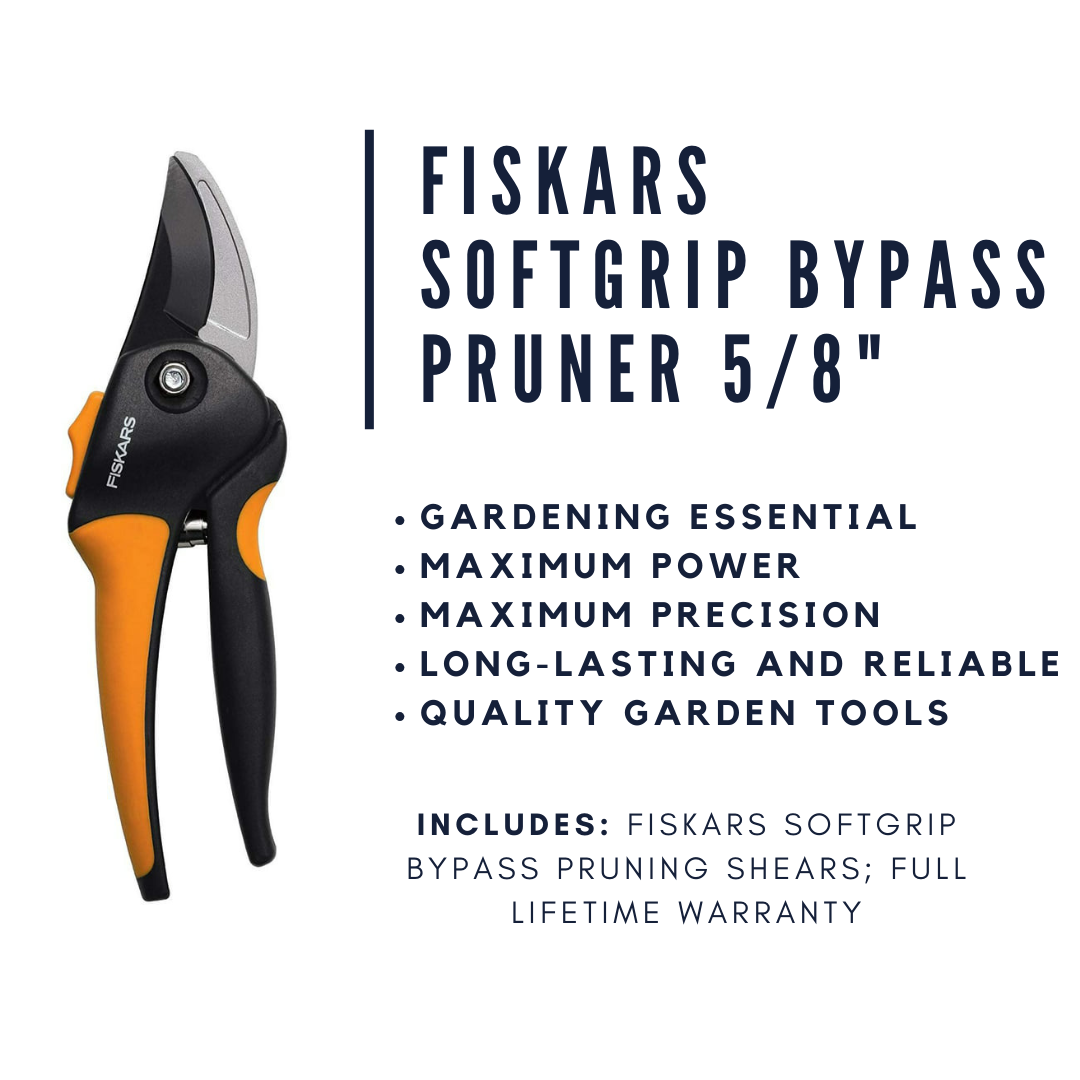
Fiskars SoftGrip Bypass Pruner 5/8"
Tree and Branch Cutter - Bypass Pruning Shears and Garden Clippers with Sharp Precision-Ground Steel Blade
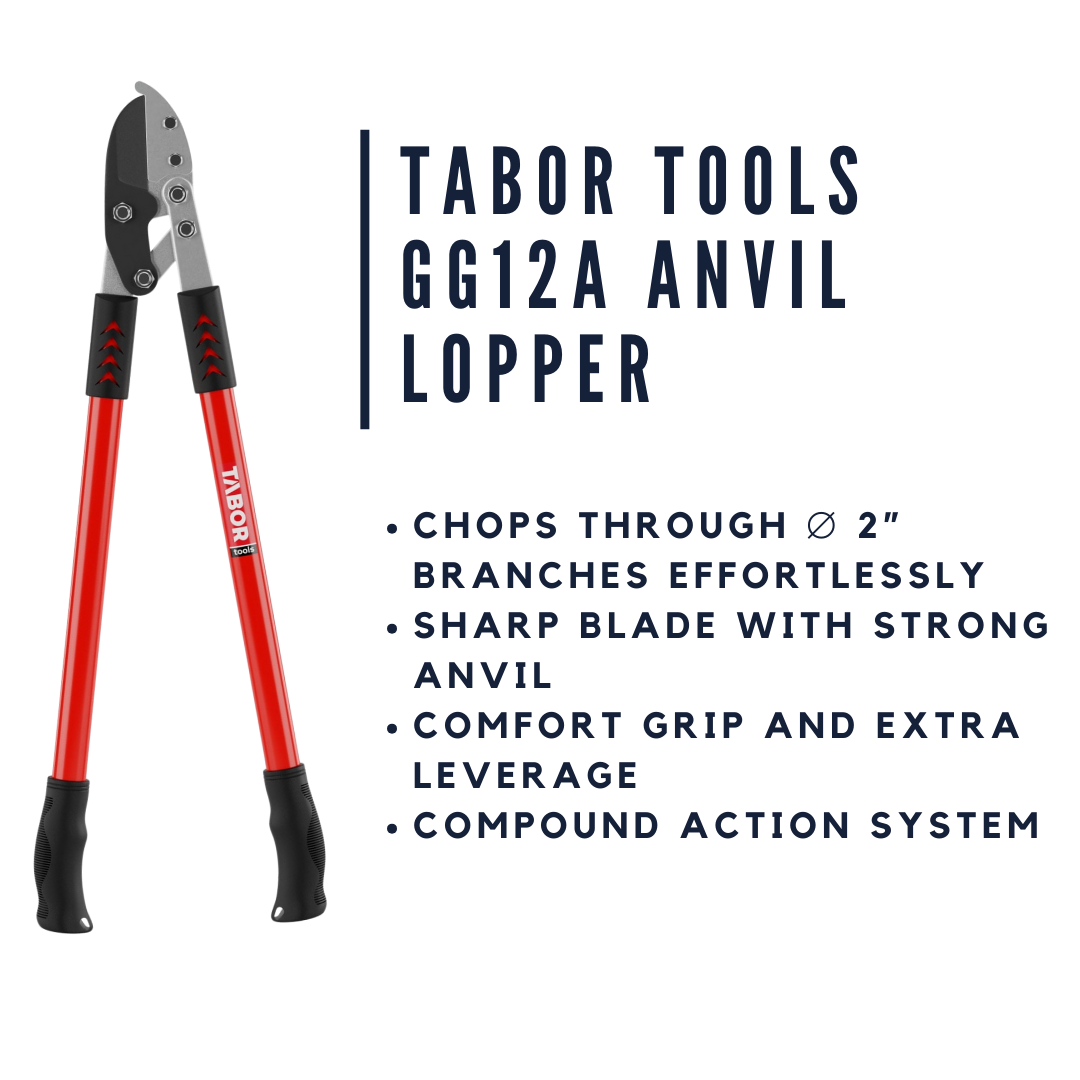
TABOR TOOLS GG12A Anvil Lopper
with Compound Action, 30 Inch Tree Trimmer, Branch Cutter with ⌀ 2 Inch Cutting Capacity, Chops Thick Branches with Ease.
For Soil Aeration
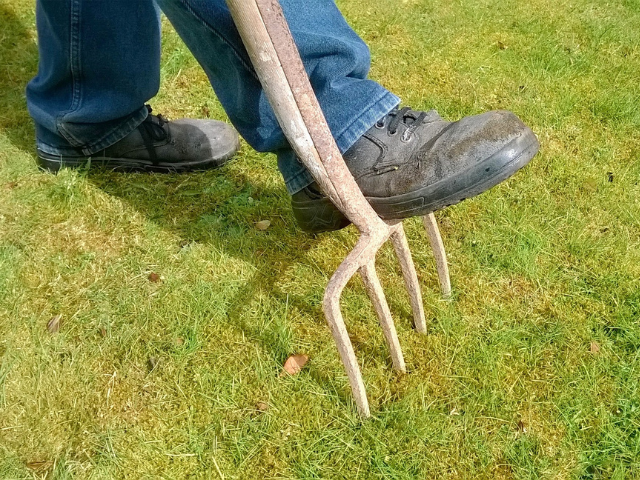
Soil aeration is needed for plants to grow healthy and strong.
Why is it needed?
Because it helps prevent issues like soil compaction and waterlogging by creating a favorable environment for plants to thrive.
What happens if you don’t aerate the soil?
- The soil will become compact; This results in a decreased supply of oxygen and nutrients to plant roots, negatively affecting overall plant health.
- The likelihood of erosion by wind and water increases, because without proper aeration, the soil structure weakens.
- Weed growth may increase, leading to competition for nutrients and space with desired plants.
- Plants will generally be less resilient to environmental stresses like droughts and extreme temperatures.
Equipment for Soil Aeration:
- Garden Fork / PitchFork (for perforating soil): Garden forks can be use for perforating the soil to allow air, water, and nutrients to penetrate the grassroots.
- Lawn Aerator (for removing soil plugs): Lawn aerators remove plugs of soil, promoting better aeration and root development.
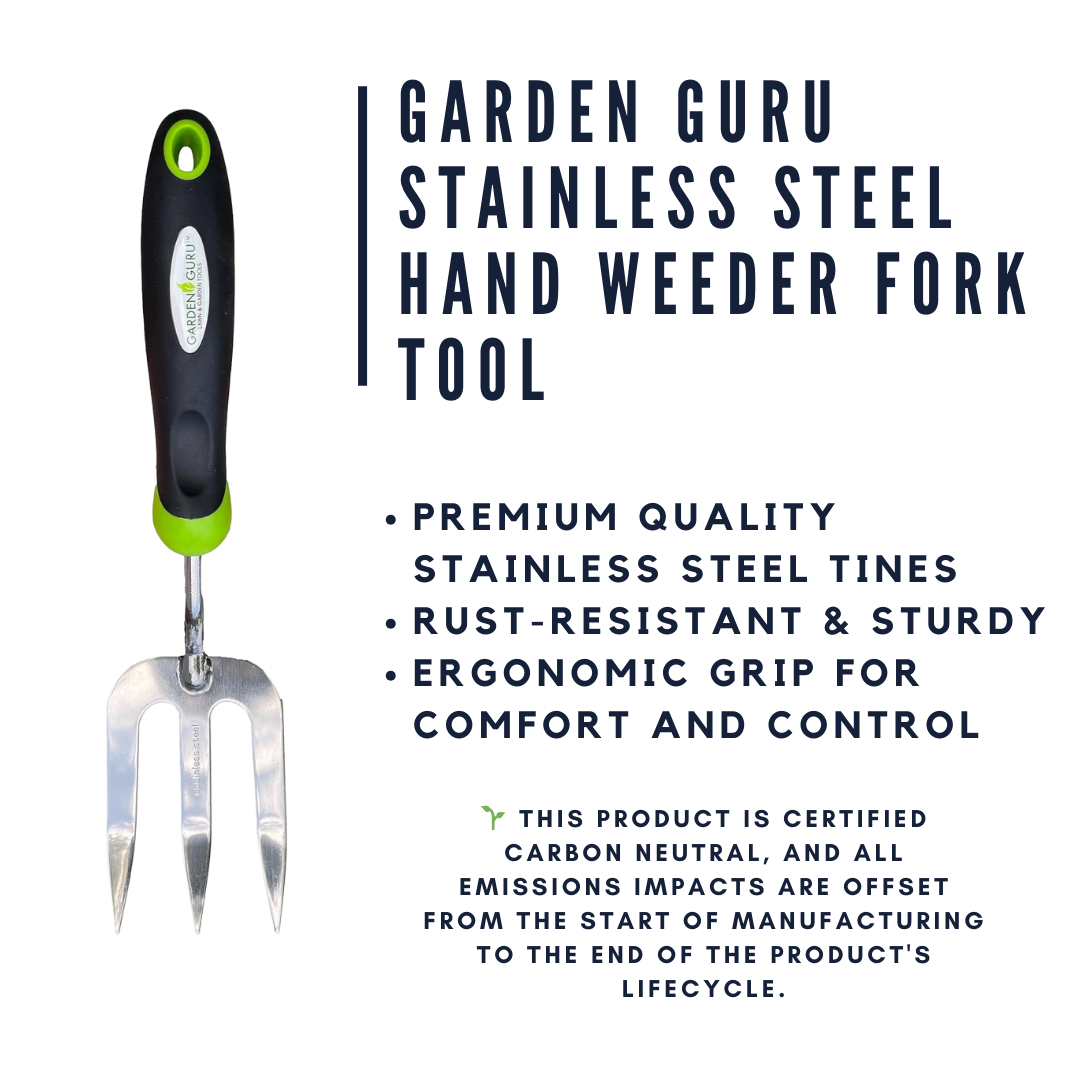
Garden Guru Stainless Steel Hand Weeder Fork Tool
Rust Resistant Stainless Steel – Ergonomic Handle – Great for Planting, Spreading Mulch, Weeding, Loosening & Transplanting Soil
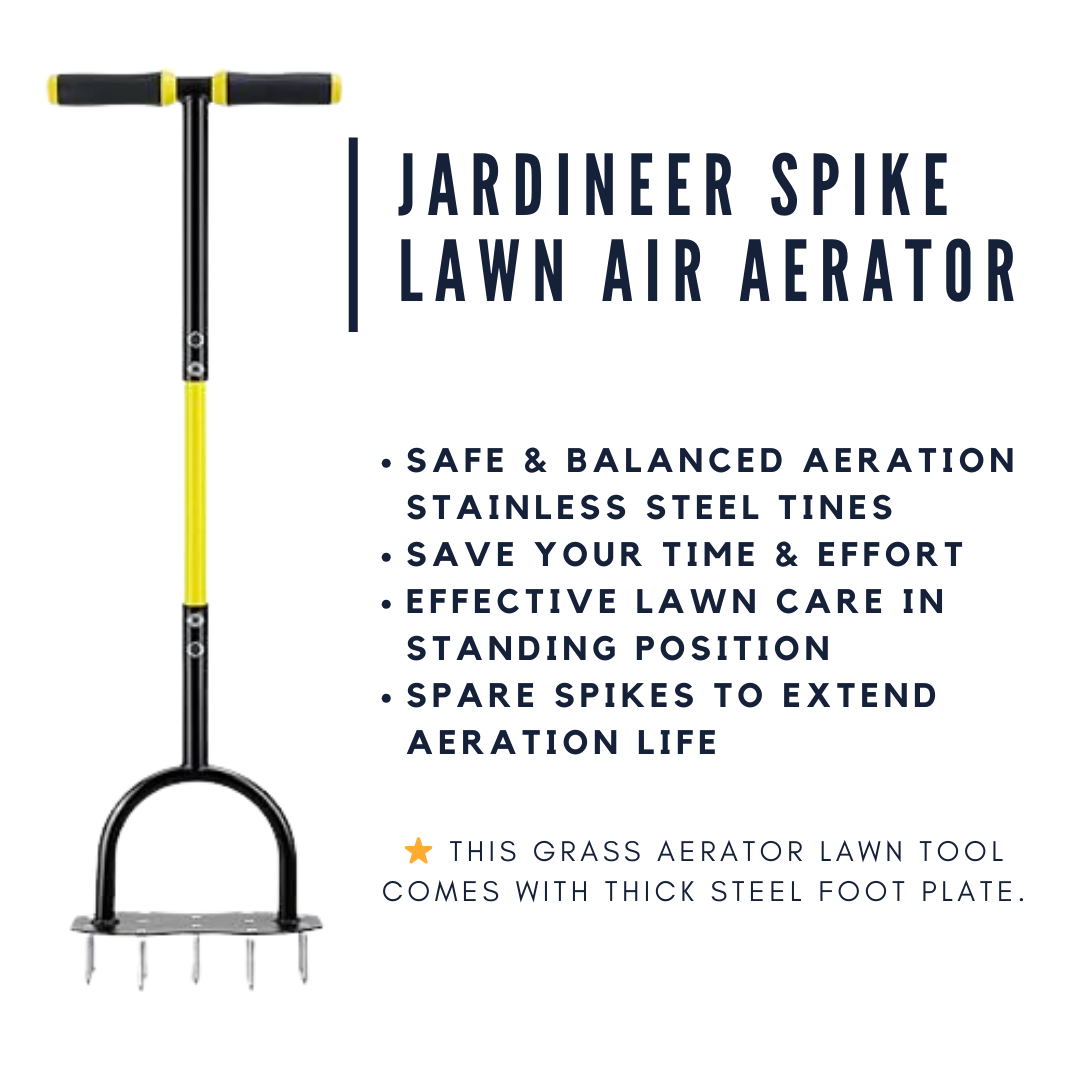
Jardineer Spike Lawn Air Aerator
Grass Aerator Lawn Tool with Spare Spikes, Manual Yard Aerator for Lawn, Garden Aerator Tool for Compact Soil
For Mulching
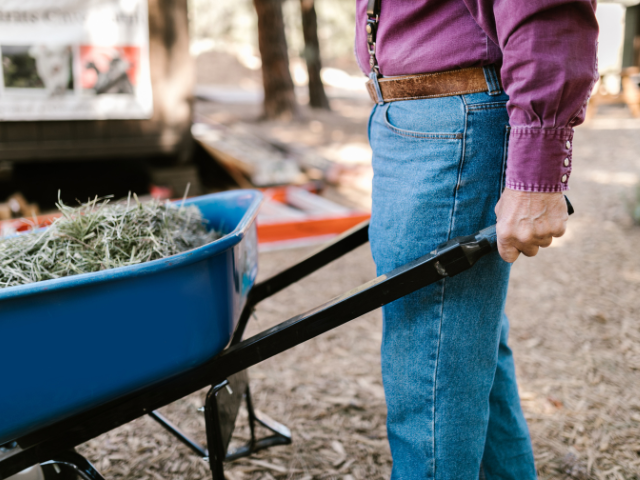
Mulching is not an absolute requirement for gardening, but it offers numerous benefits that contribute to the health and success of plants.
What is a Mulch?
Mulch are made out of various materials that serves as a protective layer for the soil.
What materials?
Materials like wood chips, straw, and leaves.
What is its purpose?
It helps retain moisture, suppress weed growth, regulate soil temperature, and enhance overall soil health.
Mulching can help with:
- Moisture Conservation;
- Weed Control;
- Soil Health and Nutrient Enrichment;
- Temperature Regulation;
- Erosion Control;
- Disease Prevention; And
- Aesthetic Appeal.
Equipment for Mulching:
- Garden Fork / PitchFork (for spreading mulch): Forks with wide tines help spread mulch evenly around plants.
- Wheelbarrow (for transporting and spreading mulch): While not a tool per se, wheelbarrows are essential for transporting and spreading mulch over larger areas.
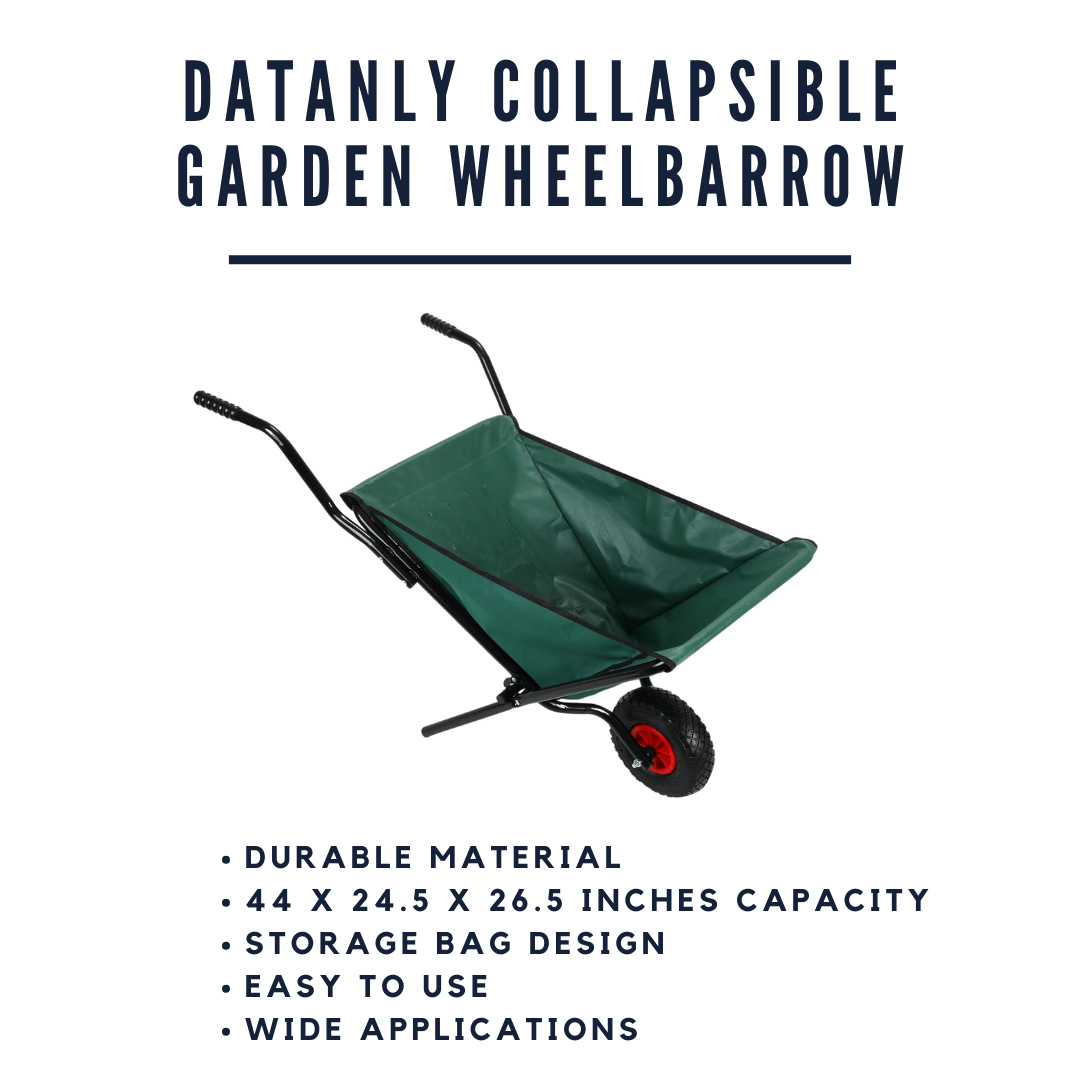
Datanly Collapsible Garden Wheelbarrow
176 lbs Foldable Yard Cart Folding Lightweight Gardening Heavy Duty Oxford Cloth Green Lawn Cart for Grass, Soil, Leaf, Garden Supplies, 10" Pneumatic Tire
Land / Plant Container
When it comes to gardening, the traditional approach involves planting directly in the ground—So naturally, before you could even start thinking of gardening, you need land with fertile soil.
However, if you're short on outdoor space, dealing with poor soil quality, or looking for a more versatile option, then fear not! Because we have alternatives 😊.
Enter plant pots and planter boxes. These containers offer a fantastic workaround, allowing you to cultivate your greenery on balconies, patios, or even indoors.
Plant Pots
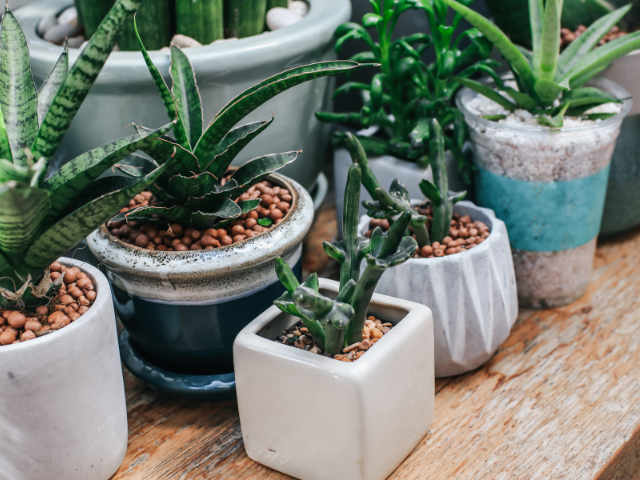
Why choose plant pot?
- Ideal for smaller plants and herbs.
- Come in various sizes, materials, and styles.
- Perfect for adding a touch of greenery to limited spaces.
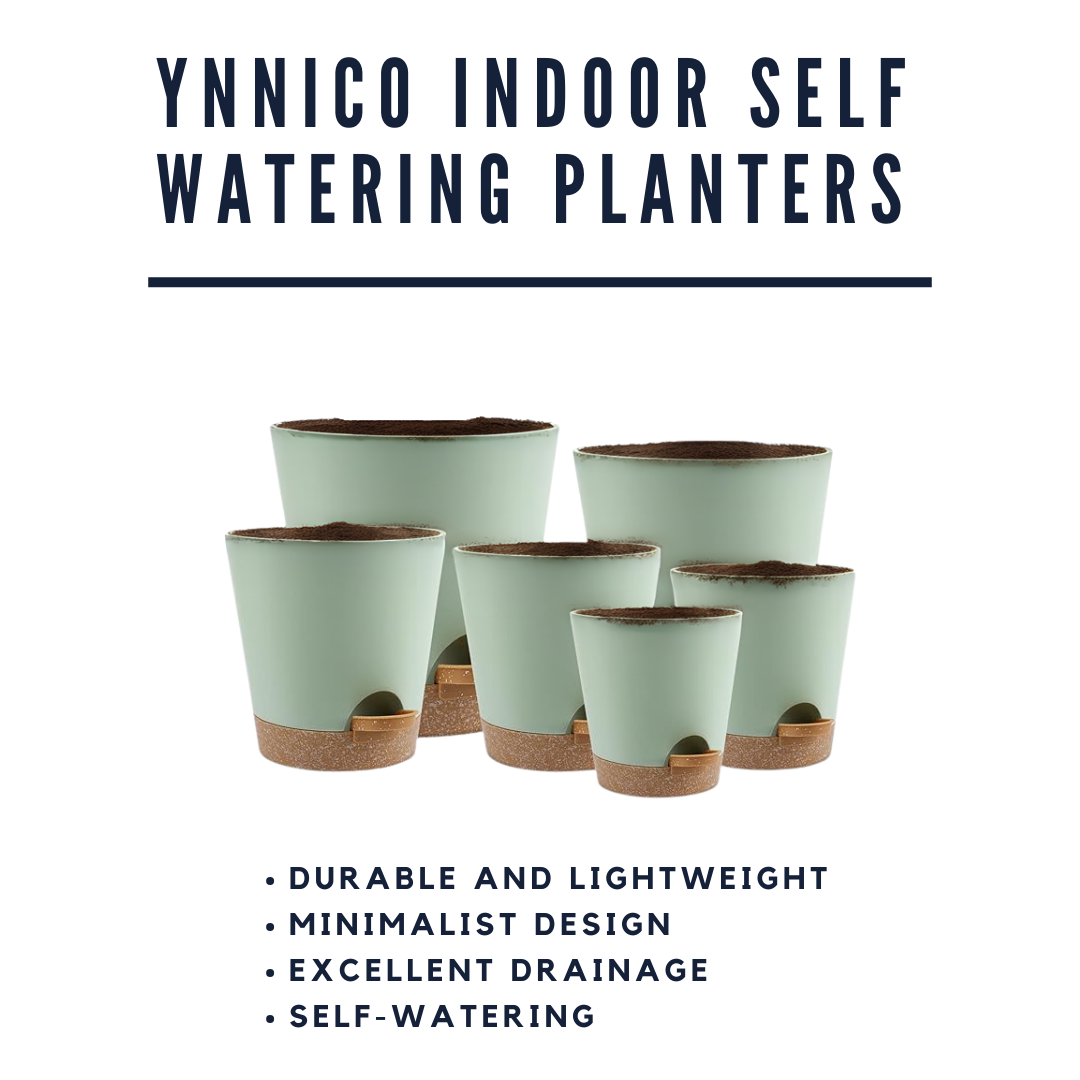
YNNICO Indoor Self Watering Planters
with Drainage Holes and Saucers, 8, 7, 6.5, 6, 5.5, 5 Inches, Green, 6 Pots. Combines 6 different sizes from 8 to 5.5 inches to suit most small to medium-sized indoor plants.
Planter Boxes
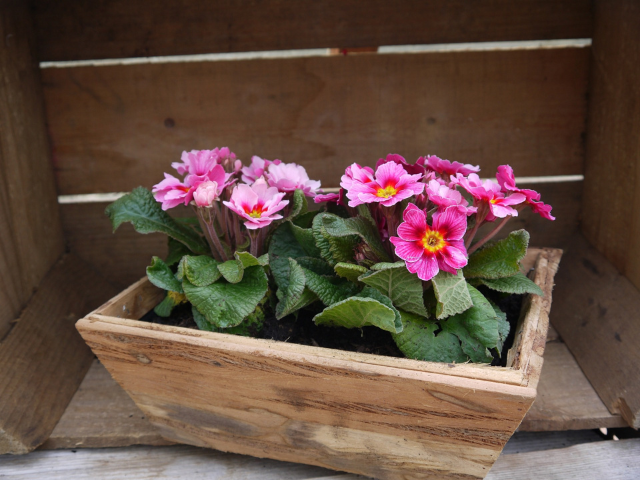
Why choose planter boxes?
- Great for growing larger plants, flowers, or even vegetables.
- Provide a defined space for gardening, adding structure to your outdoor area.
- Can be placed on decks, patios, or directly on the ground.
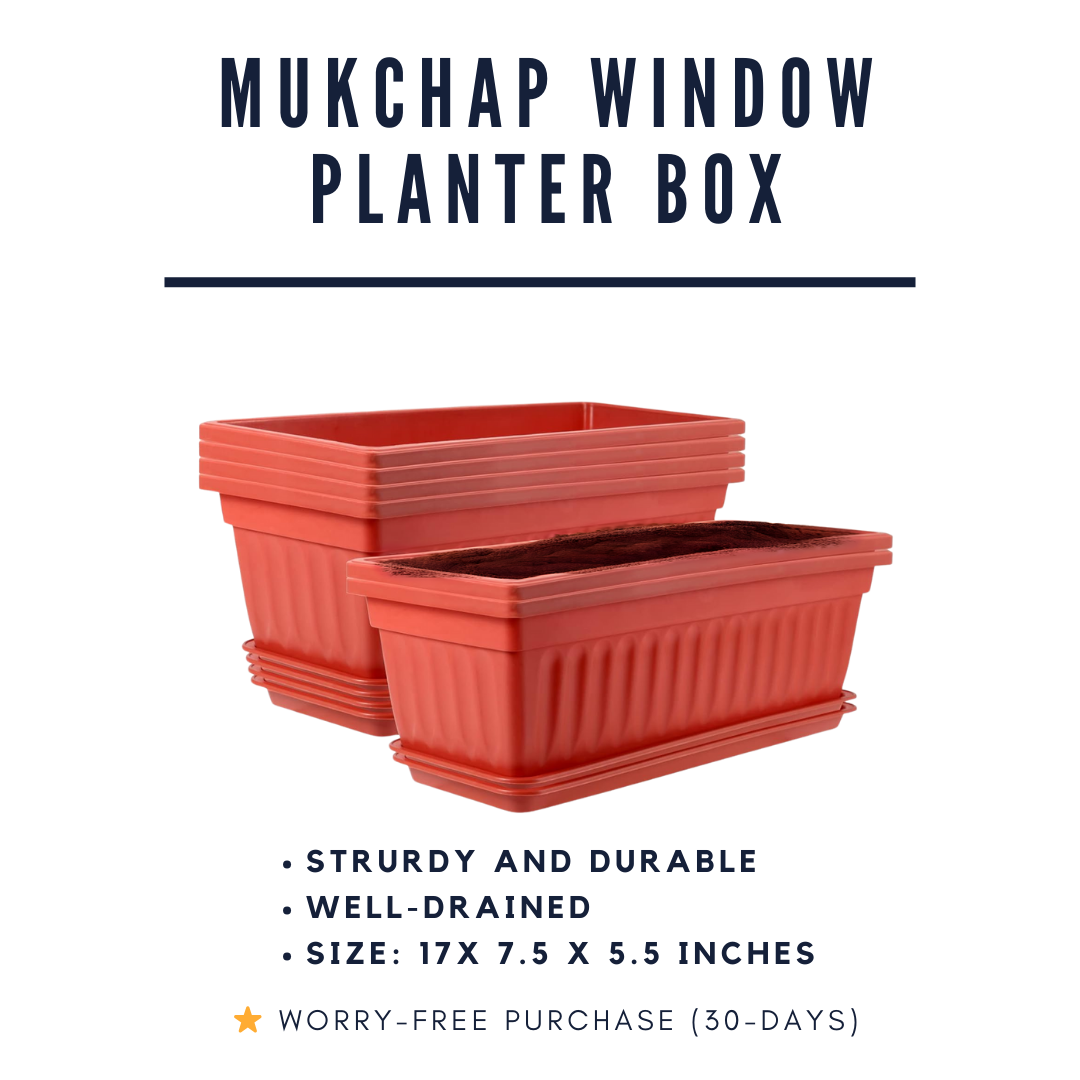
MUKCHAP Window Planter Box
6 PCS 17 Inch Plastic Flower Window Planter Box, Rectangular Flower Pot Planters with Drainage Holes and 24 Pcs Plant Labels, Vegetables Flower Growing Container Plant Pot, Red
So, while the classic appeal of planting in the ground remains, the convenience and flexibility of plant pots and planter boxes open up exciting possibilities for cultivating your garden in diverse environments.
Environments such as:
- Balconies: Transform your balcony into a green haven with an array of plant pots, adding beauty and freshness to your outdoor living space.
- Patios: Add character to your patio by arranging an assortment of plant pots and containers, creating a vibrant and inviting atmosphere.
- Decks: Elevated spaces like decks are perfect for larger planter boxes, allowing you to cultivate flowers, herbs, or even vegetables at a comfortable height.
- Indoor Spaces: Bring the outdoors inside by using plant pots for indoor gardening. Windowsills, shelves, or dedicated plant stands can host a variety of potted plants.
- Small Yards: In compact yards, plant pots and planter boxes offer a space-efficient way to introduce greenery without overpowering the limited ground area.
- Rooftop Gardens: Utilize planters for rooftop gardening, maximizing your available space and creating a beautiful rooftop retreat.
- Apartment Balconies: Even in urban environments with minimal outdoor space, balcony plant pots can turn a city apartment into a mini garden sanctuary.
Preferred Soil
When it comes to gardening, selecting the right soil is a critical factor in ensuring the health and success of your plants.
How do I know what soil is the right one for my plant?
Here's a general guideline:
- For Most Plants: A loamy soil mix provides a good balance of drainage, moisture retention, and fertility, making it suitable for a wide range of plants.
- For Succulents and Well-Draining Conditions: Sandy soil or a cactus mix with added perlite can promote excellent drainage for plants that prefer drier conditions.
- For Moisture-Loving Plants: Clay or loamy soil with good water retention is suitable for plants that thrive in consistently moist environments.
For more information about what soil to use, click here.

Inorganic or Organic Fertilizers
What is the difference between inorganic and organic fertilizers?
Organic fertilizers are derived from natural sources, while inorganic fertilizers are chemically synthesized.
Choosing between the two:
- Inorganic Fertilizers: Provide quick and precise nutrient delivery, suitable for addressing immediate nutrient deficiencies.
- Organic Fertilizers: Offer a more sustainable and environmentally friendly option, contributing to long-term soil health and fertility.
Still not sure what is what? This blog post might help.
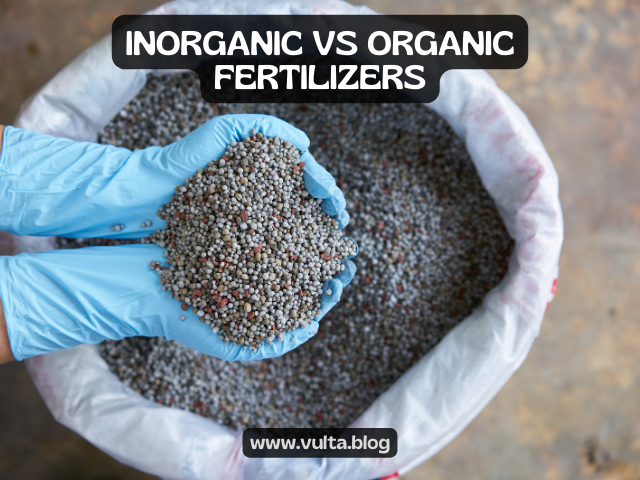
Seeds for Planting
What seed packet should I buy?
Just Pick What You Like!
What if I am new to gardening?
Here are some beginner-friendly plants that you can grow:
Marigolds (Flower)
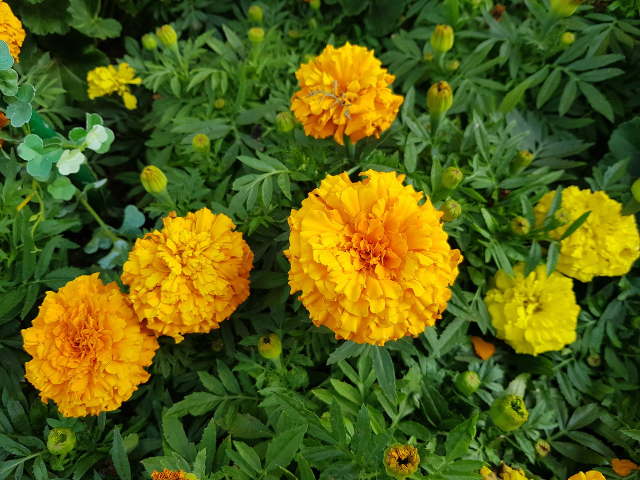
- Needs: Full sun, well-draining soil.
- Why: Marigold seeds are easy to handle, germinate relatively quickly, and produce vibrant flowers that deter pests.
Zinnias (Flower)
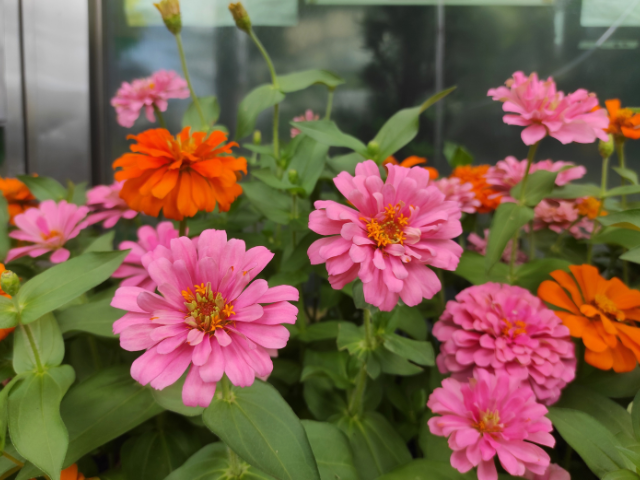
- Needs: Full sun, well-draining soil.
- Why: Zinnias are colorful and low-maintenance, making them great for beginners. They attract pollinators and provide beautiful blooms.
Radishes (Vegetable)
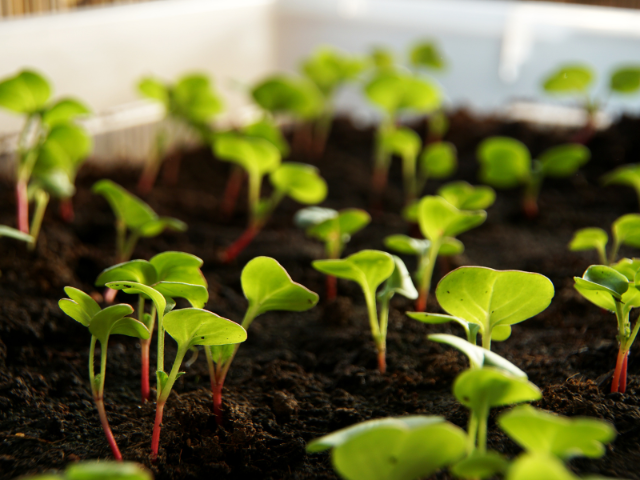
- Needs: Full sun, loose soil.
- Why: Radishes have a short growing season and are ideal for beginners. They can be harvested quickly, providing a satisfying gardening experience.
Sunflowers (Flower):

- Needs: Full sun, well-draining soil.
- Why: Sunflowers are iconic and easy to grow. They're suitable for both small and large gardens, and their large, cheerful blooms are rewarding.
Basil (Herb):
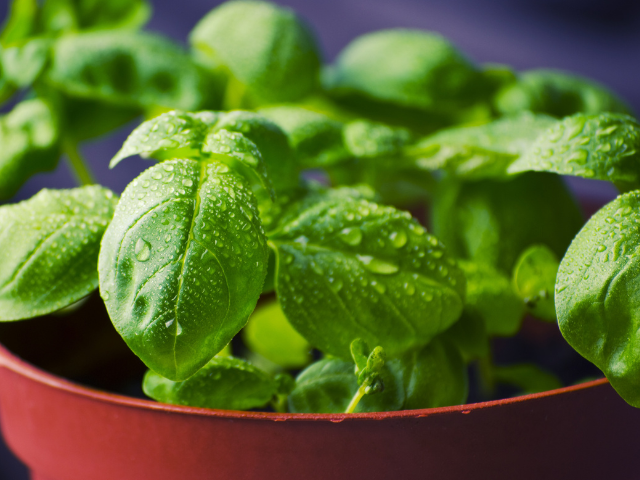
- Needs: Full sun, well-draining soil.
- Why: Basil is a versatile herb that grows well from seeds. It's a kitchen staple and great for container gardening.
Nasturtiums (Flower):
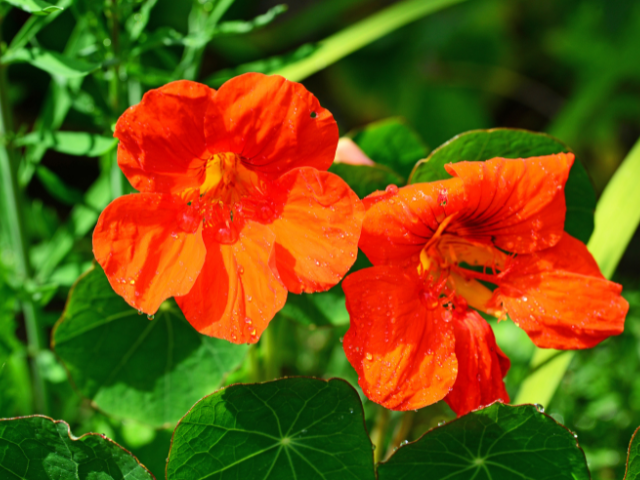
- Needs: Full sun to partial shade, well-draining soil.
- Why: Nasturtiums are edible flowers with vibrant colors. They're easy to grow, attract pollinators, and are suitable for both gardens and containers.
Things to keep in mind when buying seeds:
- Some seedlings require light to germinate, while others prefer darkness.
- Some seedlings prefer cooler temperatures, while others thrive in warmer conditions.
- Differing types of seedlings may have preferences for soil type, whether it's well-draining sandy soil, loamy soil, or rich organic soil.
- Some seedlings need consistently moist conditions, while others prefer periods of dryness before germination.
Safety Equipment
Gardening, while therapeutic, involves tools and tasks that can pose risks. Risks that can be mitigated by wearing safety equipment.
What are these safety equipment?
Gardening Gloves
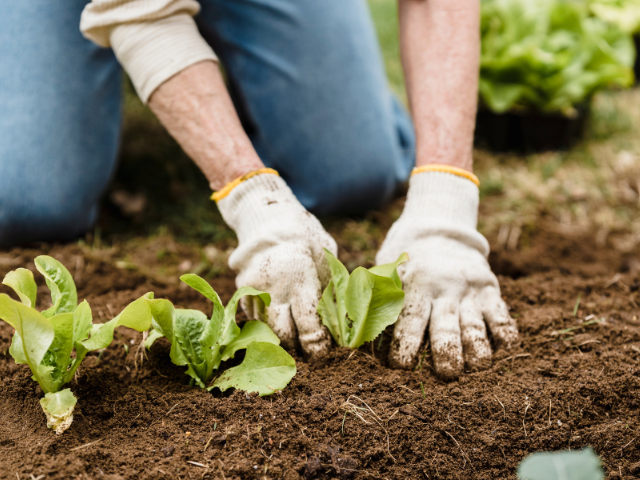
Purpose: Protect hands from cuts, blisters, and exposure to soil-borne pathogens. Gloves also provide a barrier when handling chemicals, fertilizers, or plants with thorns.
Safety Glasses or Goggles
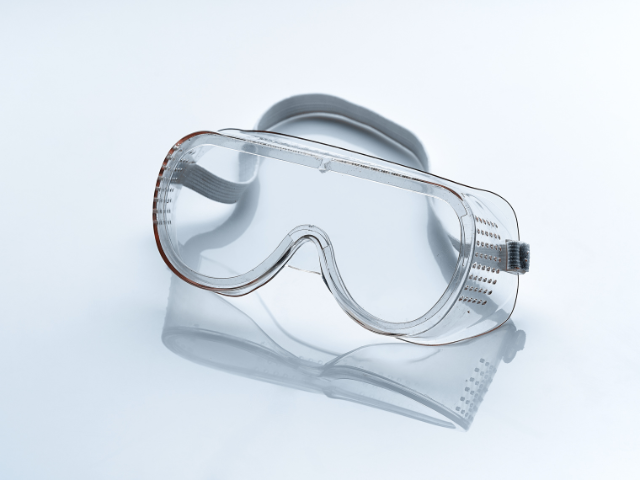
Purpose: Shield eyes from debris, dust, and potentially harmful chemicals. Essential when pruning, trimming, or using power tools that may produce flying particles.
Any Form of Sun Protection
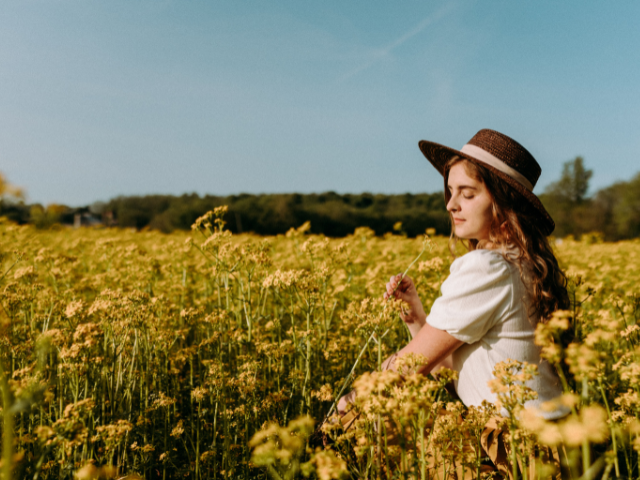
Purpose: Includes wide-brimmed hats, sunscreen, and long-sleeved clothing. Guards against sunburn and reduces the risk of long-term sun exposure.
Respirator or Dust Mask
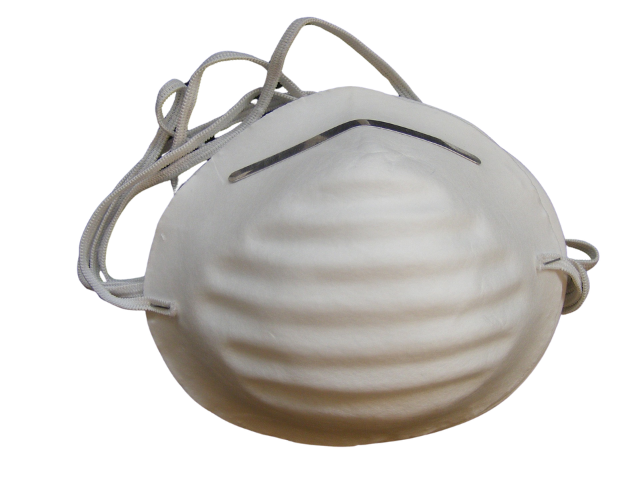
Purpose: Protects the respiratory system from inhaling dust, allergens, or particles when working with soil, compost, or using certain chemicals.
THINGS TO KEEEP IN MIND
Safety First
Ensuring safety takes precedence in gardening.
What to keep in mind:
- Use tools properly and keep them in good condition to prevent accidents.
- Wear appropriate gear like gloves, safety glasses, and sturdy footwear for added protection.
- Follow instructions when using fertilizers or pesticides, and store chemicals in a safe place away from children and pets.
- Be mindful of plants that may cause allergies and use protective clothing if needed.
- Store tools safely to prevent tripping hazards and keep them out of reach of children.
Be sure to wear Long Pants and Sleeves
Why?
To shield skin from scratches, insect bites, and exposure to irritants.
Especially important when working in areas with tall grass, thorny plants, or potential allergens.
Copyright ©2023 by Marshall Vulta





Comments ()